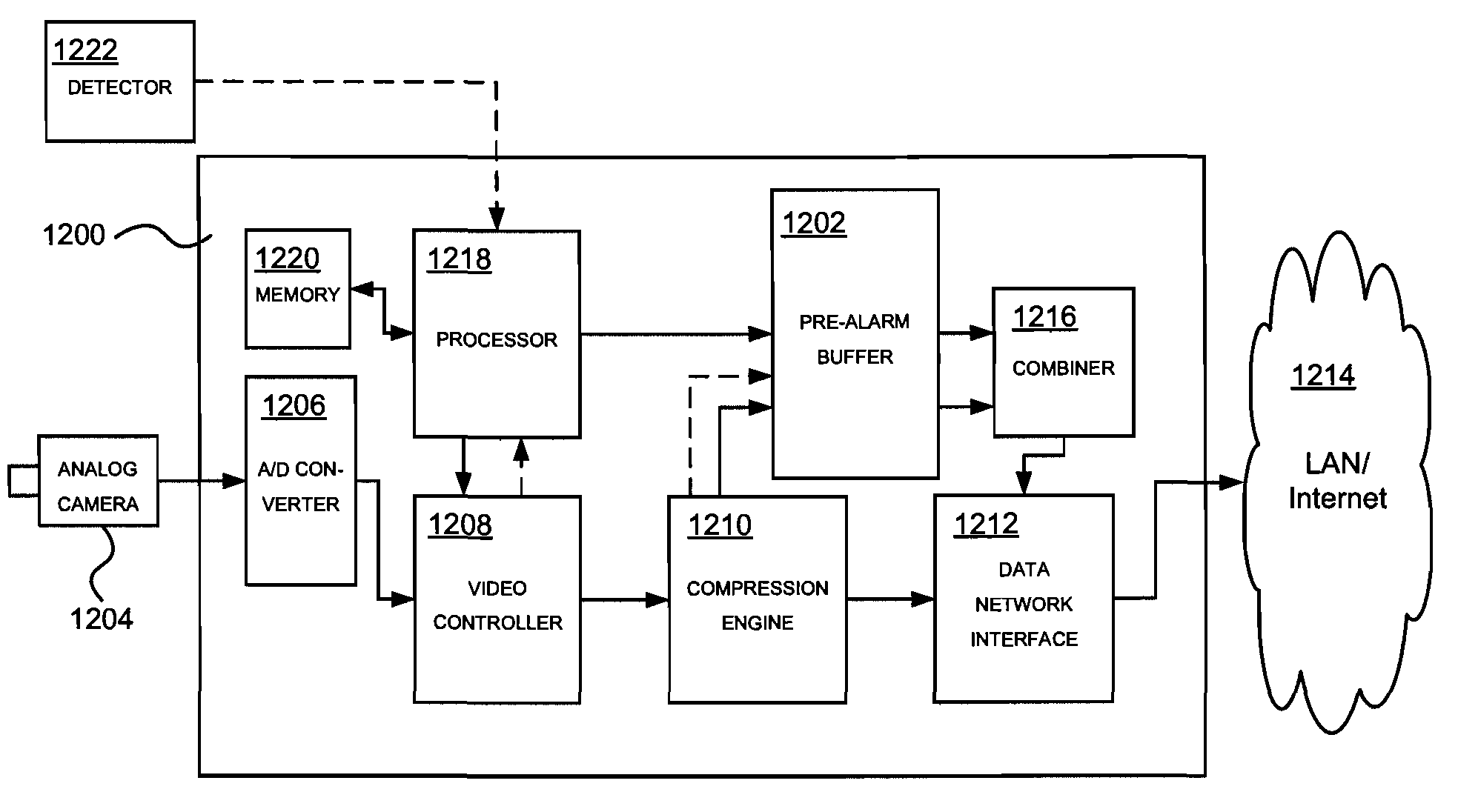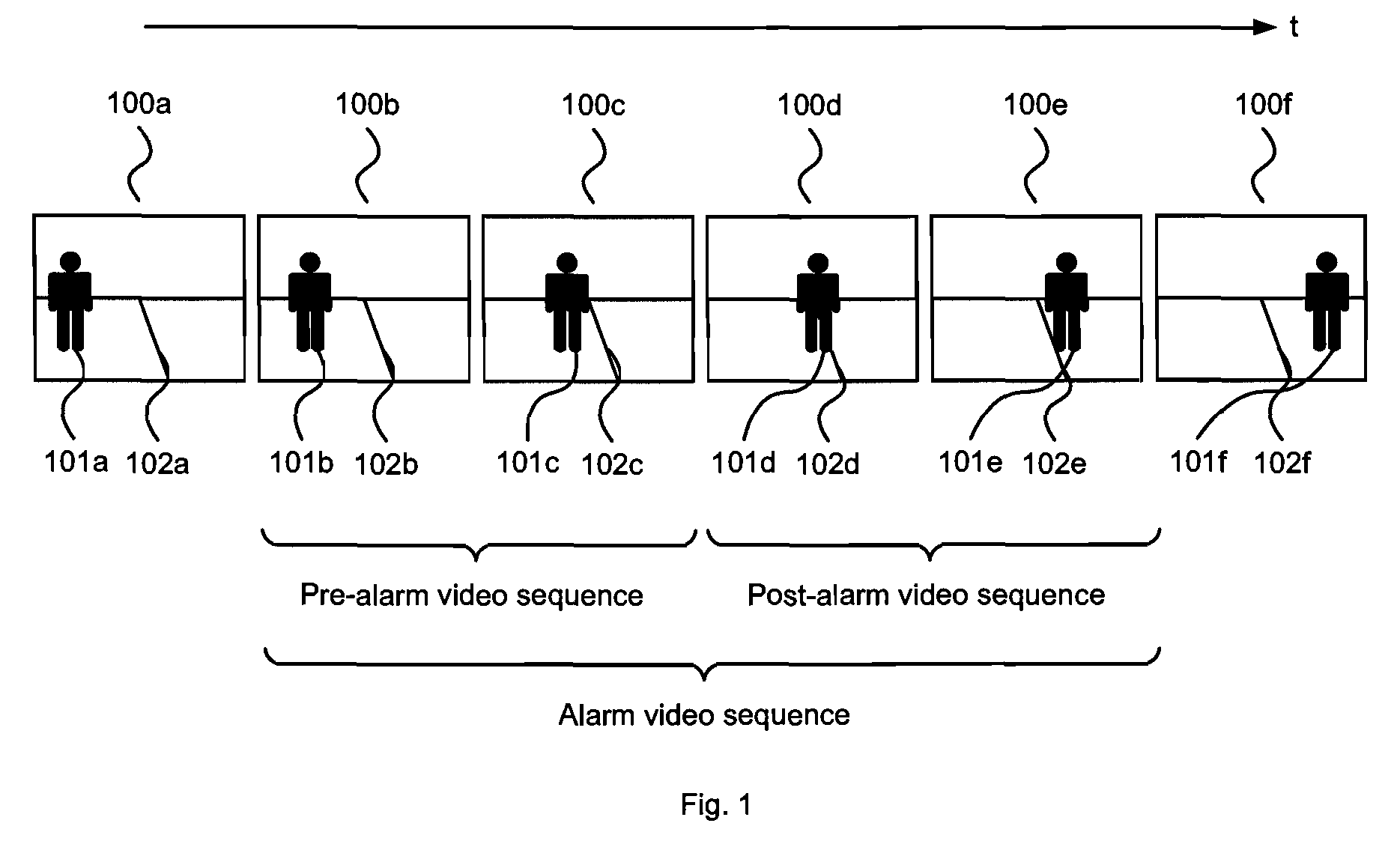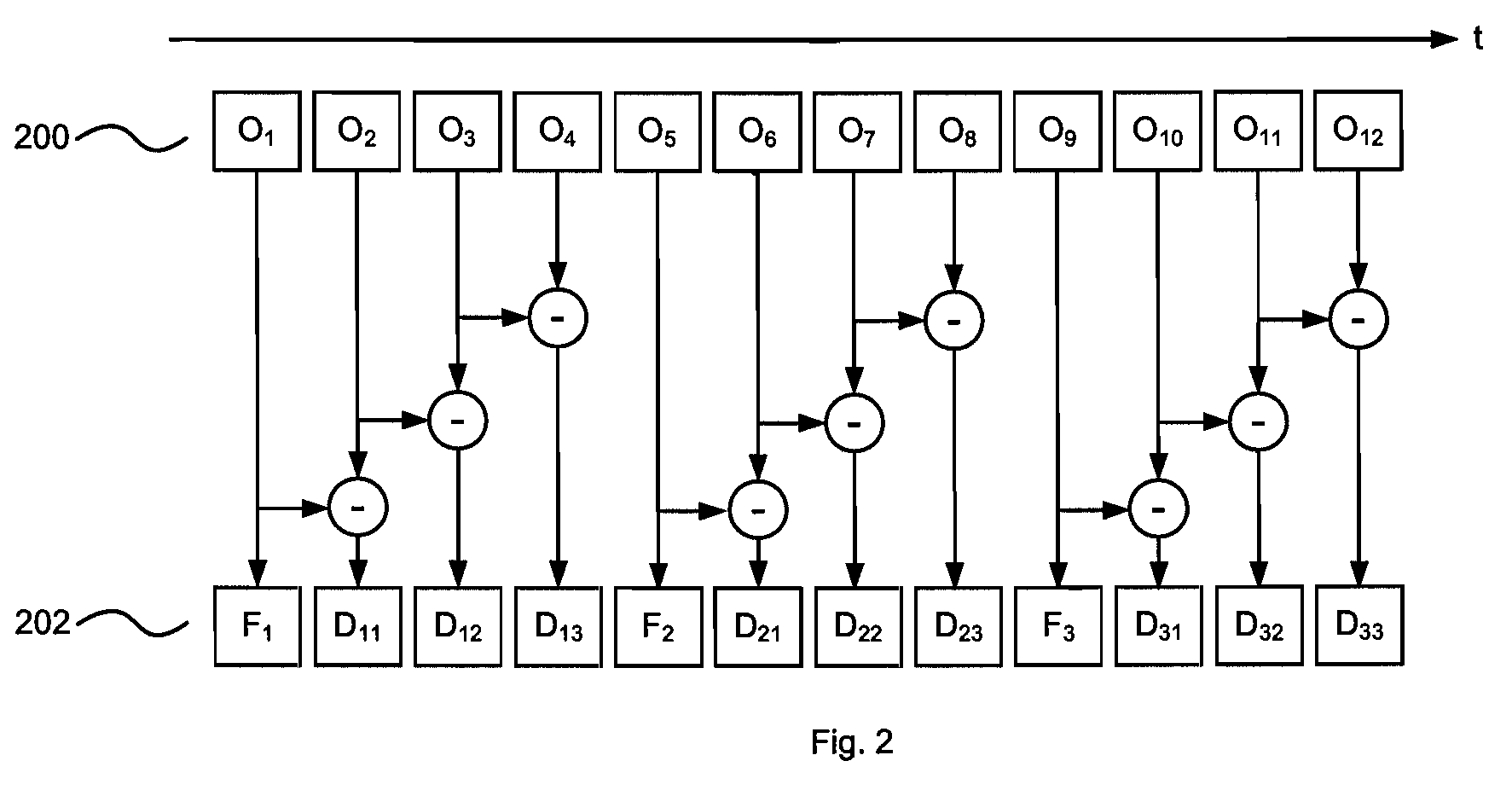Pre-alarm video buffer
a video buffer and video sequence technology, applied in the field of buffering of video sequences, can solve the problems of shortening the length affecting the quality of the pre-alarm video sequence, and not having enough information to present complete images
- Summary
- Abstract
- Description
- Claims
- Application Information
AI Technical Summary
Benefits of technology
Problems solved by technology
Method used
Image
Examples
first embodiment
[0080]In FIG. 4, the general principle of the present invention is illustrated. A compressed video signal, i.e. full image frames and differential image frames, is sequentially input to a pre-alarm video sequence buffer 400 comprising a buffer 402 buffering compressed video, the buffer 402 or corresponding buffers are sometimes in this application referred to as video sequence FIFO buffers, and a buffer 404 buffering full image frames only, the buffer 404 or corresponding buffers are sometimes in this application referred to as full frame FIFO buffers.
[0081]Each input frame from the video signal is stored in the buffer 402. When the buffer becomes full the oldest frame is removed in accordance with the FIFO principle, FIFO.
[0082]When a new full image frame is received, the full image frame in the buffer 404 is updated. In order to keep track of when a new full image frame is received a counter 406 can be utilized.
[0083]When a detection signal reaches the pre-alarm video sequence buf...
second embodiment
[0088]In FIG. 5, the invention is illustrated. Briefly, a compressed video signal is sequentially input to a pre-alarm video sequence buffer 500 comprising a buffer 502 buffering compressed video, a buffer 504 buffering full image frames and an image updater 506. When a detection signal is received a pre-alarm video sequence is generated by a combiner 508.
[0089]The general difference between the first and second embodiment is that in the first embodiment the buffer 404 comprises the most recent full image frame for every frame in the buffer 402, but in the second embodiment the buffer 504 comprises a corresponding full image frame for every frame in the buffer 502. This is achieved by the image updater 506, which determines a corresponding full image for every incoming image frame.
[0090]When an incoming frame of the compressed video signal is received, the incoming frame is buffered in the buffer 502 and transmitted to the image updater 506. The image updater 506 generates a corresp...
fourth embodiment
[0099]In FIG. 7, the invention is illustrated. Unlike the embodiments described above, a compressed video signal and a compressed full image frame video signal, herein also referred to as F-frame video signal, are input to a pre-alarm video sequence buffer 700. The compressed video signal comprises compressed full image frames, herein referred to as F-frames, and compressed differential image frames. This compressed video signal can e.g. be a MPEG-4 video sequence. The F-frames and the F-frame video signal may be named I-frames and I-frame video signal in some compression methods.
[0100]The F-frame video signal represents the same video sequence as the compressed video signal. The difference is that the F-frame video signal only includes F-frames. Hence, for every image frame in the compressed video signal a corresponding compressed full image frame is present in the F-frame video signal.
[0101]The compressed video signal is input to a buffer 702 buffering compressed video and the F-f...
PUM
 Login to View More
Login to View More Abstract
Description
Claims
Application Information
 Login to View More
Login to View More - R&D
- Intellectual Property
- Life Sciences
- Materials
- Tech Scout
- Unparalleled Data Quality
- Higher Quality Content
- 60% Fewer Hallucinations
Browse by: Latest US Patents, China's latest patents, Technical Efficacy Thesaurus, Application Domain, Technology Topic, Popular Technical Reports.
© 2025 PatSnap. All rights reserved.Legal|Privacy policy|Modern Slavery Act Transparency Statement|Sitemap|About US| Contact US: help@patsnap.com



